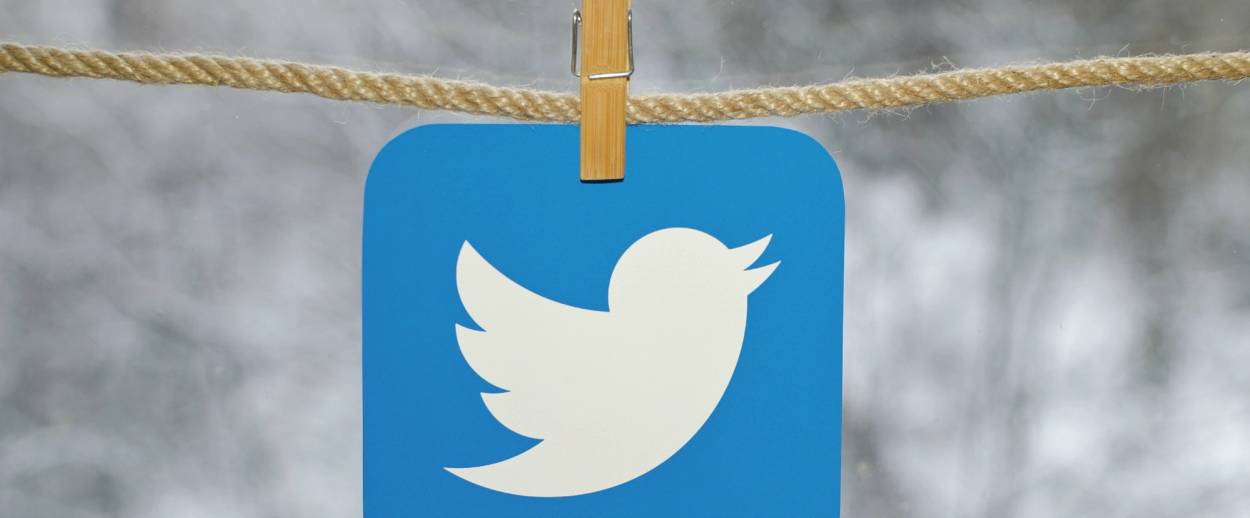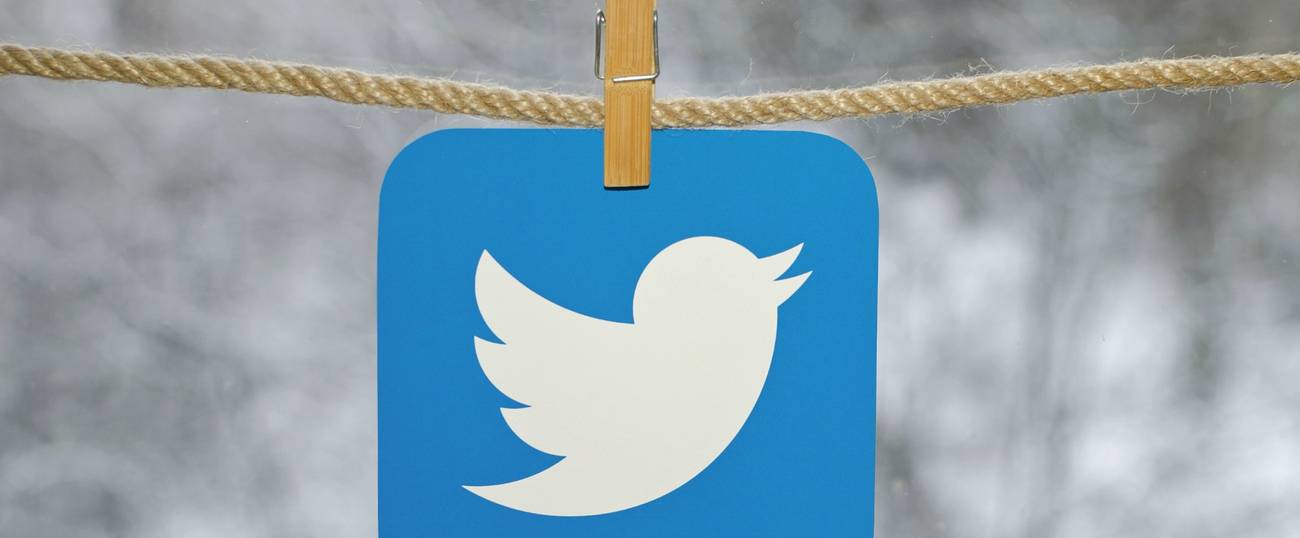Like Twitter Like Talmud
On the social network’s 10th birthday, here’s a pretty definitive guide to Jewish Twitter




If you’re any kind of a frequent Twitter user, at some point you’ve fervently wished that the thing had just never been invented. The social network, microbloggling tool, networking bonanza, joke format, and angry mob organizational platform debuted 10 years ago today. It cannot un-debut. We’re stuck with the thing. And it’s so useful, especially for journalists, we’re probably stuck with it for the rest of our lives—or I am, at least.
For Jews, there’s actually plenty worth celebrating about the medium’s survival. As Marc Tracy wrote for Tablet in 2012, there’s an energetic Jewish presence on the site. And it’s little wonder, since there’s plenty in the Twitterian Sheol—or pit of chaos—that Jews can recognize. There’s the detectably Talmudic patter to Twitter’s daily avalanche of argument and reference: Like rabbinic literature, Twitter is a comprehensive running commentary on virtually everything.
As followers of, for instance, Naval War College professor Tom Nichols and journalist Jonathan M. Katz know, Twitter has its Hillels and Shammais, equally-matched adversaries whose endless, inherently unwinnable debates unspool across their mutual followers’ timelines. Also, many of the most profound statements in Pirkei Avot are eerily tweet-length:

As a Twitter obsessive for most of the past decade, I’ve noticed some more cautionary Jewish characteristics in Twitter as well: In a famous Talmudic story, Ben Zoma loses his sanity upon entering Pardes, the highest plane of spiritual and theological understanding. According to the Talmud, Ben Zoma’s insanity was the subject of the following line from the Book of Proverbs: “Did you find honey? Eat only as much as you need, lest you be overfilled and vomit it up.”
It’s advice that’s easy to ignore on Twitter, where the boundary between enlightenment and engorgement—perhaps even insanity—is similarly perilous. At its worst, Twitter can become a kind of parallel reality capable of overwhelming the actual reality upon which it depends. Watching Twitter during some kind of major media event—a presidential address, an NCAA tournament game, an awards show—can be a more fun and interesting experience than watching the event itself. Twitter is an escape from the real, into the real, creating inter-linking realms of lived experience with certain Jewish echoes of its own. As the 17th century Kabbalist Isaiah Horowitz of Prague wrote, “Everything that exits in the lower worlds alludes to the upper worlds, and from the revealed we reach the concealed.”
There is a flatness to Twitter that embodies a recognizably Jewish aspiration. Jews often celebrate moments in which impossible distances of history, metaphysics, geography, and experienced are momentarily collapsed: think back to the re-enactment of the exodus at the Seder table, or Krusty the Klown’s teary reunion with his father in a classic 1991 Simpsons episode. On Twitter, there is no distance. The dead roam among the living; moments of history are frozen in real time, with the medium preserving their urgency and confusion. Legends leave the physical world with words of almost Bibical finality and wisdom. Even God is there, sort of.
Everyone and everything are there—and they’ll be there until Twitter’s servers melt. You can take advantage of it all with the help of these 18 Twitter accounts, an entry point in to Jewish Twitter (once, of course, you begin by following Tablet.)
The Sefaria Project, 960 followers
Sefaria digitizes Jewish texts, most recently an English-language version of Rashi’s commentaries. Their Twitter feed tweets out links to some of the database’s most interesting and seasonally relevant texts.
Noga Tarnopolsky, 9,425 followers
The Israel and Palestine news director for The Media Line is an incisive commentator on events in Israel and the broader Jewish world. Her tweets on the murder of Argentine prosecutor Alberto Nisman were some of the most essential writing on the subject in any medium.
Mordecai Lightstone, 3,502 followers
Rabbi Lightstone is Chabad.org’s social media editor. His Twitter feed gives his followers a glimpse of life as roving shaliach, or emissary, which can take an interesting turn or two.
Yiddish News, 26,000 followers
Almost the entirety of this high-volume, ultra orthodoxy-focused account’s tweets consist of a single photo with an informative, tweet-length headline. Yiddish News is often ahead of traditional media during developing news events, and became an essential follow during the 2014 Gaza escalation. When there isn’t a whole lot of Jewish-related breaking news, followers are treated to esoteric yet nevertheless interesting windows into ultra-Orthodox life from the around the world.
Jacob Kornbluh and Jewish Insider, 6,600 and 1,500 followers, respectively
In recent years, the New York-based Kornbluh has set himself apart through his understanding of both orthodox and more mainline American Jewish communities, along with dogged shoe-leather reporting on local and national politics. Kornbluh’s Jewish Insider newsletter is also becoming the go-to cheat-sheet on the Jewish aspects of American politics.
The 1948 Middle East War, 1,900 followers
Even though this account is winding down, This feed provides a day-by-day, blow-by-blow account of Israel’s war of independence. You probably didn’t know that Israel and Jordan signed a preliminary armistice this month in 1949—but you would if you were following this account.
Adam Holland, 1,745 followers.
A tireless chronicler of anti-Semitism, Holland has taken on the unpleasant duty of tracking Jewish-related online hatespeech. There’s little editorializing or analysis in Holland’s tweets, giving his feed a detached, reportorial quality that makes it all the more important.
Ron Gilran, 990 followers
The founder of Levantine Group is one of Twitter’s most informative (and most under-followed) commentators on Middle Eastern affairs.
Rival Twitter feeds (here and here) from the Satmar Hasidic movement, 15,600 and 7,500 followers, respectively
Perhaps you live in north Brooklyn, and are curious about what your neighbors are up to. Naturally, the schismatic movement, which counts some 150,000 global followers, has two Twitter feeds dedicated to chronicling events within one of Judaism’s most important ultra-orthodox sects.
Paul Hirschson, 3,400 followers
Hirschson is Israel’s ambassador to Senegal, and his feed is a candid, English-language chronicle of the daily work of an Israeli diplomat in a country with a population that’s roughly 92% Muslim.
Barbara Opal-Rome, 4,560 followers
Defense News’s Israel correspondent is one of the top journalists working the security beat in Israel and the Palestinian territories.
Maimonides, 4,400 followers
The greatest Jewish thinker in history has been dead since the early 13th century. But he lives on as a Twitter bot, offering centuries-old wisdom that’s sure to elevate the spiritual and intellectual quality of just about anyone’s timeline.
The Talmud Blog, 1,020 followers:
Finally, high-level Talmudic commentary and scholarship, in easily digestible blog form.
The National Library of Israel, 580 followers
A constant stream of photos and documents, mostly from the past century of Jewish and Israeli history.
Michael Koplow, 4,300 followers
The policy director of the Israel Policy Forum and Ottomans and Zionists blogger is an astute commentator on Turkish, Israeli, and Jewish affairs.
Michael Pitkowsky, 600 followers
The Rabbinics Curriculum Coordinator at the Academy for Jewish Religion brings an amazingly deep knowledge of Judaism, Israel, and Israeliana to his criminally under-followed Twitter feed.
Armin Rosen is a staff writer for Tablet Magazine.